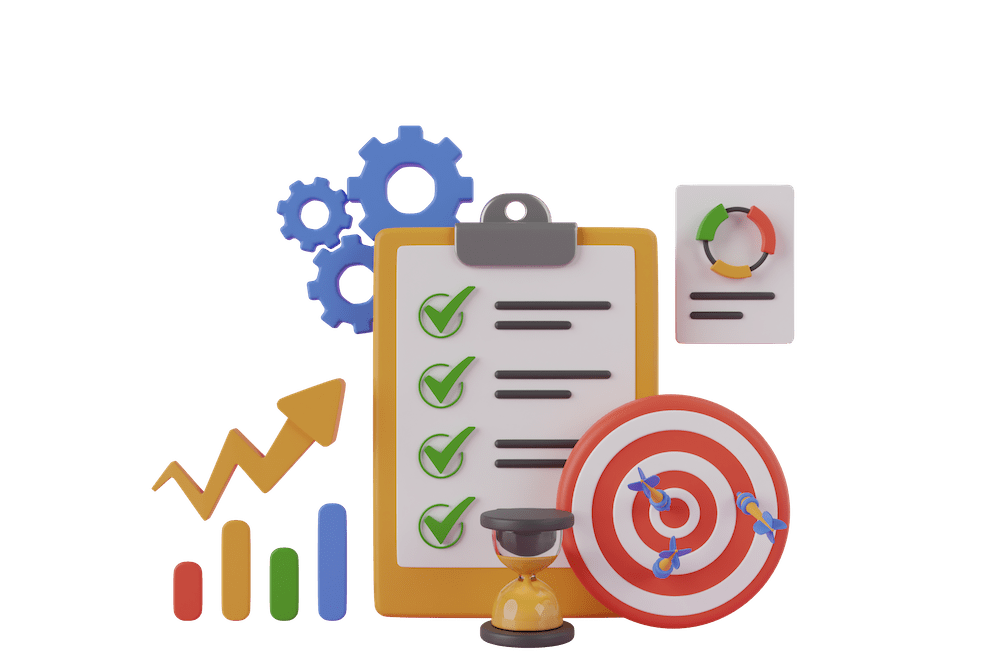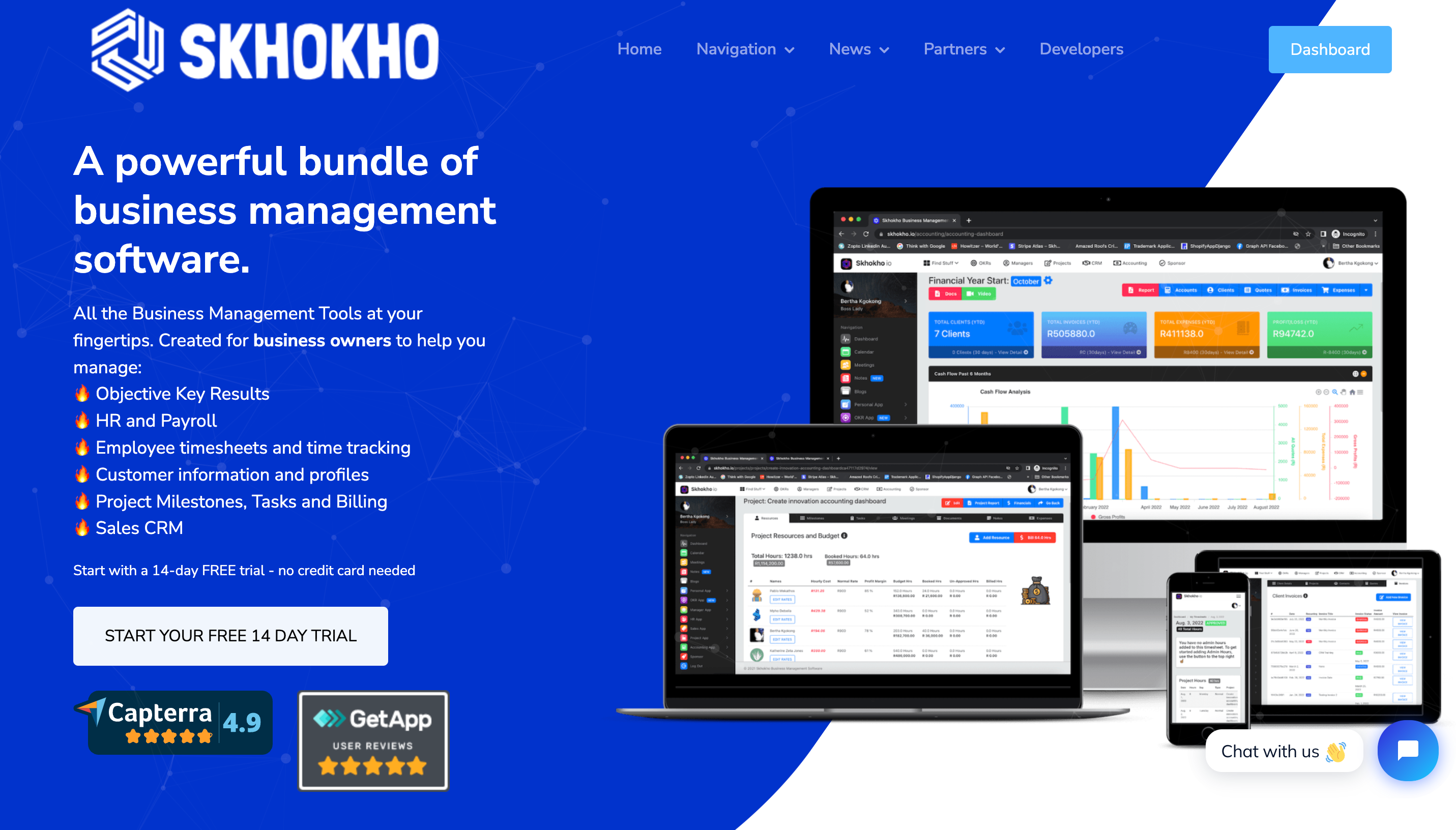Project Success Made Simple: 10 Strategies for Effective Project Management
Project management has become an integral part of the business world, with organizations of all sizes and industries relying on it to deliver a successful project. Effective project management strategy can make the difference between a project that meets its goals and one that falls short, and it is essential for ensuring that projects are completed on time, within budget, and to the satisfaction of all stakeholders.

In this blog, we will explore the importance of effective project management and its key principles, including project planning, risk management, resource allocation, and communication. Whether you are a seasoned project manager or just starting out in your career, this blog will provide valuable insights and tips to help you achieve successful project management even for future projects.
The 10 Project Management Strategies
Achieving successful project execution requires a combination of effective planning, risk management, resource allocation, and communication, as well as the ability to adapt to change and unexpected challenges. Here are 10 strategies that can help ensure project management success:
Strategy 1: Proper Planning and Organization
Defining the project scope and goals: is a critical step in the project management process, as it lays the foundation for the rest of the project. Project scope refers to the boundaries of the project and what is included and excluded from it. Defining it helps to ensure that everyone involved in the project has a clear understanding of what is expected and what is not. Goals, on the other hand, define what the project is meant to achieve and provide a roadmap for the project team to follow. Setting clear and specific goals helps to ensure that everyone is working towards the same outcome and helps to keep the project on track.
Creating a project timeline and budget: these are crucial components of project planning. A project timeline outlines the sequence of tasks and milestones that need to be achieved to complete the project, and assigns deadlines to each. This helps to ensure that the project stays on track and that all stakeholders are aware of the expected progress. A project budget defines the financial resources required to complete the project, including labor costs, materials, and overhead expenses. It is important to create a realistic budget that takes into account all of the costs associated with the project, and to regularly monitor and adjust the budget as needed. By creating a project timeline and budget, project managers can ensure that the project stays on schedule and within budget, and that they have the resources they need to deliver successful outcomes.
Assigning roles and responsibilities to team members: an important aspect of project management. It helps to ensure that everyone knows what is expected of them and that there is clear accountability for each task. Roles should be assigned based on the skills and experience of each team member, and responsibilities should be clearly defined and communicated to everyone involved in the project. This can help to minimise confusion, increase efficiency, and improve collaboration.

Strategy 2: Clear Communication
Regular meetings and updates: are an important aspect of clear communication in project management. They provide an opportunity for team members to come together, share progress, address any challenges, and receive feedback. This can help to ensure that everyone is aligned and working towards the same goals. Regular meetings and updates can take many forms, such as team meetings, status updates, progress reports, and project reviews. The frequency of meetings and updates should be determined based on the needs of the project and the stakeholders involved.
Clear and concise communication with all stakeholders: is essential for ensuring that everyone has a clear understanding of the project goals, timeline, and budget. It is important to communicate regularly and effectively with everyone involved in the project, including team members, project sponsors, and stakeholders. This helps to minimize misunderstandings, reduce the risk of errors, and increase the overall success of the project. Stakeholders should be informed of any changes to the project plan, and any potential risks or challenges should be discussed and addressed as soon as possible. By fostering clear and concise communication with all stakeholders, project managers can increase collaboration, improve decision-making, and deliver successful outcomes.
Strategy 3: Risk Management
Identifying potential risks: is an important aspect of project management. Risks are uncertainties that could negatively impact the project if they occur. By identifying potential risks early, project managers can develop contingency plans to minimize their impact and ensure that the project stays on track. Risk identification can be done through a variety of techniques, such as brainstorming sessions, SWOT analysis, or scenario planning. It is important to consider all types of risks, including technical risks, schedule risks, budget risks, and stakeholder risks.
Developing a contingency plan: A contingency plan is a backup plan that outlines the steps to be taken if a risk materializes. It helps to minimize the impact of risks and ensures that the project stays on track. A contingency plan should be developed for the most significant risks and should be regularly reviewed and updated as the project progresses.
Monitoring and mitigating risks during project execution: During project execution, it is important to regularly monitor and mitigate risks to ensure that they do not negatively impact the project and ensure successful project execution. Project managers should use risk monitoring tools, such as checklists, risk dashboards, and risk reports, to keep track of potential risks and their status. If a risk materializes, the project manager should take immediate action to minimize its impact, and may need to activate the contingency plan. By effectively monitoring and mitigating risks during project execution, project managers can increase the chances of successful project completion.

Strategy 4: Time Management
Time management: is a critical aspect of project management, as it helps to ensure that the project is delivered on time and within budget. Effective time management requires prioritizing tasks, staying on track with project timelines, and balancing workloads and delegating responsibilities.
Prioritizing tasks: involves identifying the most important tasks and focusing on completing them first. This helps to ensure that the project stays on track and that the most critical tasks are completed in a timely manner.
Staying on track with project timelines: involves regularly monitoring progress and ensuring that all tasks are completed on time. Project managers can use project management software, Gantt charts, and other tools to keep track of project timelines and ensure that the project stays on track.
Balancing workloads and delegating responsibilities: involves assigning tasks to team members based on their skills, experience, and availability. It also involves ensuring that each team member has a manageable workload and that tasks are completed in a timely manner. By effectively managing time, project managers can increase efficiency, reduce the risk of delays, and improve the chances of project success.
Strategy 5: Cost Control
Cost control is a critical aspect of project management, as it helps to ensure that the project is delivered within budget. Effective cost control requires setting a budget, monitoring expenses, and making adjustments to stay within budget.
Setting a budget: involves establishing a financial plan for the project, taking into account the costs of materials, labor, and overhead. It is important to set a realistic budget that takes into account all of the necessary expenses for the project.
Monitoring expenses: involves tracking the actual costs of the project against the budget, and regularly updating the budget as needed. Project managers can use project management software, spreadsheets, and other tools to monitor expenses and ensure that the project stays within budget.
Making adjustments to stay within budget: involves making changes to the project as needed to ensure that expenses do not exceed the budget. This may involve renegotiating contracts, adjusting the scope of the project, or finding ways to reduce costs. By effectively controlling costs, project managers can ensure that the project is delivered on budget and improve the chances of project success.

Strategy 6: Motivating and Engaging Team Members
Motivating and engaging team members is an important aspect of project management, as it helps to ensure that team members are committed to the project and perform at their best. Effective motivation and engagement require encouraging collaboration, providing incentives and recognition, and promoting a positive and supportive work environment.
Encouraging collaboration: involves creating an environment where team members work together to achieve common goals. This can be done through team-building activities, regular team meetings, and promoting open communication among team members.
Providing incentives and recognition: involves rewarding team members for their hard work and achievements. This can be done through bonuses, promotions, or other forms of recognition. Providing incentives and recognition helps to motivate team members and improve performance.
Promoting a positive and supportive work environment: involves creating an environment where team members feel valued and supported. This can be done through open communication, providing opportunities for professional development, and fostering a culture of respect and trust. By effectively motivating and engaging team members, project managers can increase productivity, improve morale, and enhance the chances of project success.
Strategy 7: Flexibility and Adaptability
Flexibility and adaptability are important aspects of project management, as they help to ensure that the project can adapt to changes and overcome challenges. Effective flexibility and adaptability require anticipating and embracing changes, encouraging creative problem solving, and being open to new ideas and approaches.
Encouraging creative problem solving: involves fostering a culture where team members are encouraged to think outside the box and find creative solutions to challenges. This can be done through regular brainstorming sessions, promoting open communication, and providing opportunities for professional development.
Being open to new ideas and approaches: involves being willing to consider new ideas and approaches, even if they are unconventional. This requires an open mind, a willingness to embrace change, and a commitment to continuous improvement. By being flexible and adaptable, project managers can enhance the chances of project success and ensure that the project is delivered on time and within budget.
Strategy 8: Client Relationships
Client relationships: are an important aspect of project management, as they help to ensure that clients are satisfied with the project and will continue to work with the organization in the future. Effective client relationships require building trust and credibility, listening to client needs and concerns, and providing regular updates and exceeding expectations.
Building trust and credibility: this means establishing a positive relationship with the client by being transparent, honest, and delivering on commitments. This requires effective communication, building rapport, and delivering high-quality work.
Listening to client needs and concerns: means actively seeking feedback from the client and incorporating their needs and concerns into the project. This requires open communication, being responsive to client requests, and being flexible in addressing their needs.
Providing regular updates and exceeding expectations: involves regularly communicating with the client about the project progress, providing regular updates, and going above and beyond to meet their needs. This can be done through regular status reports, meeting with the client to discuss progress, and delivering a high-quality final product. By building strong client relationships, project managers can enhance the chances of project success, improve customer satisfaction, and strengthen the organization's reputation.
Strategy 9: Continual Improvement
Continual improvement is an important aspect of project management, as it helps to ensure that the organization and its projects are always evolving and improving. Effective continual improvement requires evaluating project performance and outcomes, incorporating feedback and suggestions, and seeking opportunities for growth and improvement.
Evaluating project performance and outcomes: involves regularly reviewing the project's progress and performance to identify areas for improvement. This can be done through post-project evaluations, gathering feedback from stakeholders, and conducting regular performance reviews.
Incorporating feedback and suggestions: involves taking the feedback and suggestions received from stakeholders and incorporating them into the project to improve its performance. This requires being open to constructive criticism, being proactive in seeking feedback, and being responsive to suggestions for improvement.
Seeking opportunities for growth and improvement: involves being proactive in seeking new opportunities for growth and improvement, both for the organization and for individual projects. This requires being open to new ideas, continuously learning and professional development, and embracing change and innovation. By continually improving, project managers can ensure that projects are delivered more efficiently, effectively, and to a higher quality, and that the organization is well-positioned for future growth and success.
Strategy 10: Celebration and Recognition
Celebration and recognition is an important aspect of project management, as it helps to boost team morale, increase motivation, and recognize the hard work and contributions of team members. Effective celebration and recognition requires recognizing and celebrating project milestones, celebrating team achievements and successes, and encouraging team members to reflect on their contributions.
Recognizing and celebrating project milestones: involves acknowledging and celebrating important events or achievements during the project, such as completion of specific tasks or reaching key goals. This helps to keep team members motivated and focused on the project's progress.
Celebrating team achievements and successes: involves recognizing and celebrating the contributions of individual team members, as well as the team as a whole. This can be done through public recognition, rewards and incentives, and team-building activities.

Best Project Management System
Skhokho project management system provides a comprehensive solution for managing projects. By combining project milestones, tasks, meetings, documents, and notes into one centralized platform, teams can streamline their project management processes and work more efficiently. With Skhokho, project managers can easily keep track of project progress, communicate with team members, and make informed decisions based on real-time project data. The system also allows for customization and integration with other tools, making it a flexible and adaptable solution for a wide range of project management needs.
Benefits of using skhokho for project management
Skhokho project management tool provides several benefits for teams, including:
- Increased efficiency
- Improved communication
- Better time management
- Better cost control
- Improved team motivation and engagement
- Increased flexibility and adaptability
- Improved client relationships
By using Skhokho project management system, teams can effectively manage projects, improve their processes, and achieve better outcomes.

Features of Skhokho
A. Project planning and organization: Skhokho provides a comprehensive project planning and organization tool that helps teams define project scope, set project goals, create project timelines and budgets, and assign roles and responsibilities to team members.
B. Communication and collaboration: Skhokho features tools for clear communication and collaboration, including regular meetings and updates, clear and concise communication with all stakeholders, and the ability to embrace technology to enhance communication.
C. Task management and time tracking: Teams can use Skhokho to manage and prioritize project tasks, stay on track with project timelines, and track the time spent on each task.
D. Budget and cost management: Skhokho provides tools for cost control, including the ability to set a budget, monitor expenses, and make adjustments to stay within budget. Teams can also use the system to monitor project progress and identify any potential cost overruns.
These features of Skhokho project management system provide teams with the tools they need to effectively manage projects, improve communication and collaboration, and achieve better outcomes.
How To Get Started with Skhokho
Skhokho offers a free 14-day free trial, click here to register an account, no credit card information needed. Their pricing is very reasonable for small businesses, click here to view the pricing page.
For a proper guidance on how to use this amazing Web App, they provide a documentation guide and YouTube videos, making it easy to find your way within the app.

Final thoughts on the importance of project management tools
In conclusion, project management tools like Skhokho play a crucial role in ensuring the success of projects. With the right tools, teams can plan, organize, and execute projects more efficiently, reduce risk, improve communication and collaboration, and ultimately achieve better outcomes. By providing a centralized platform for project management, these tools help teams to stay on track, meet deadlines, and manage resources effectively. Ultimately, the use of project management tools can result in increased efficiency, improved project outcomes, and greater success for organizations.









